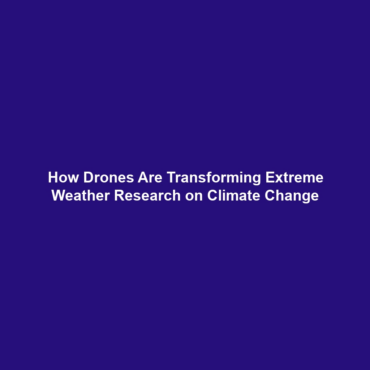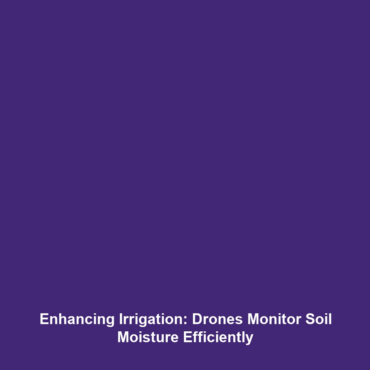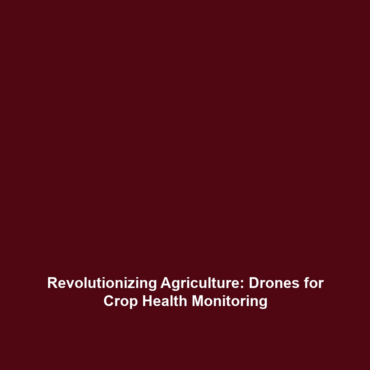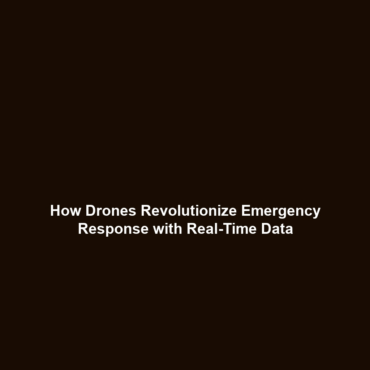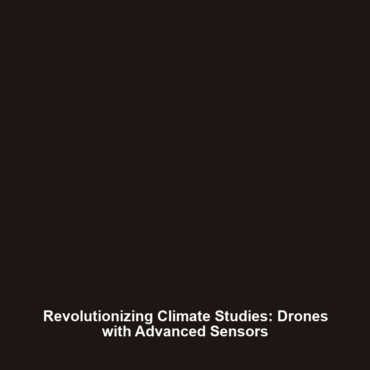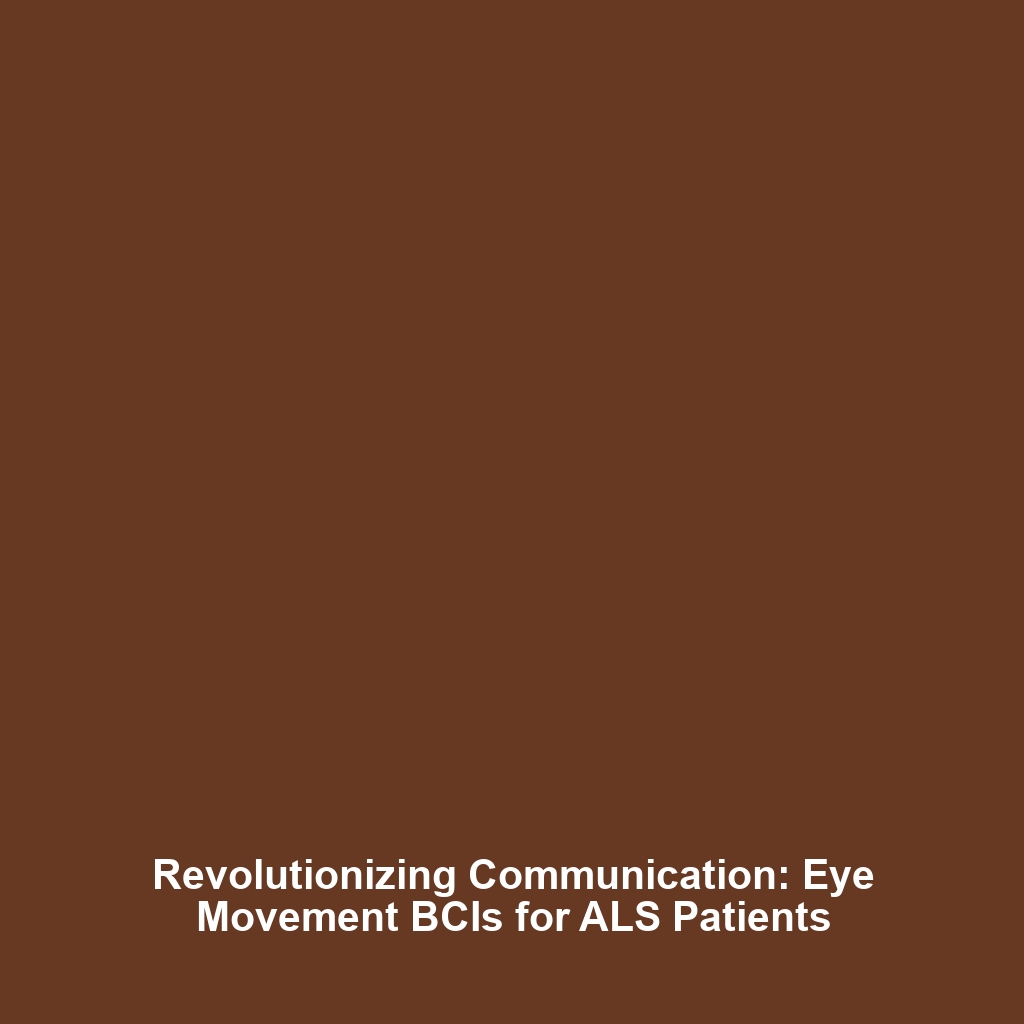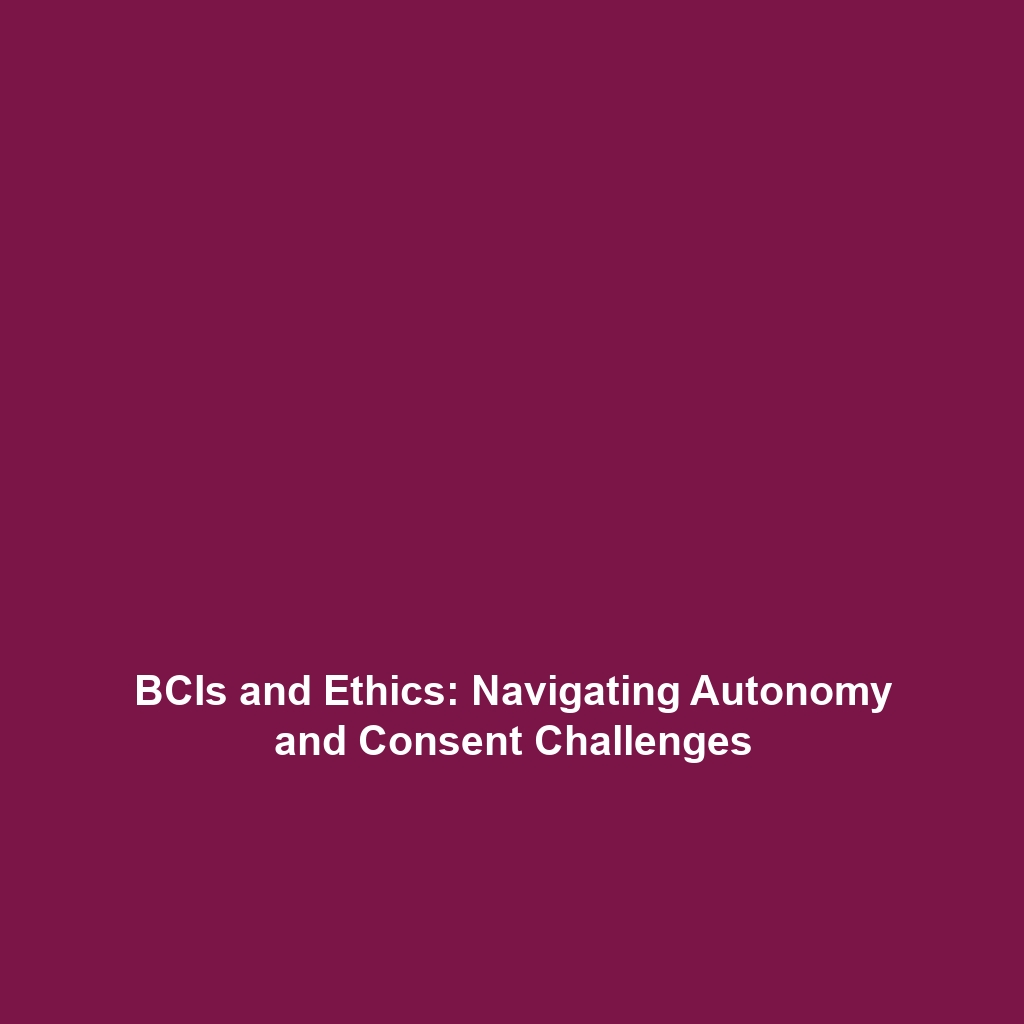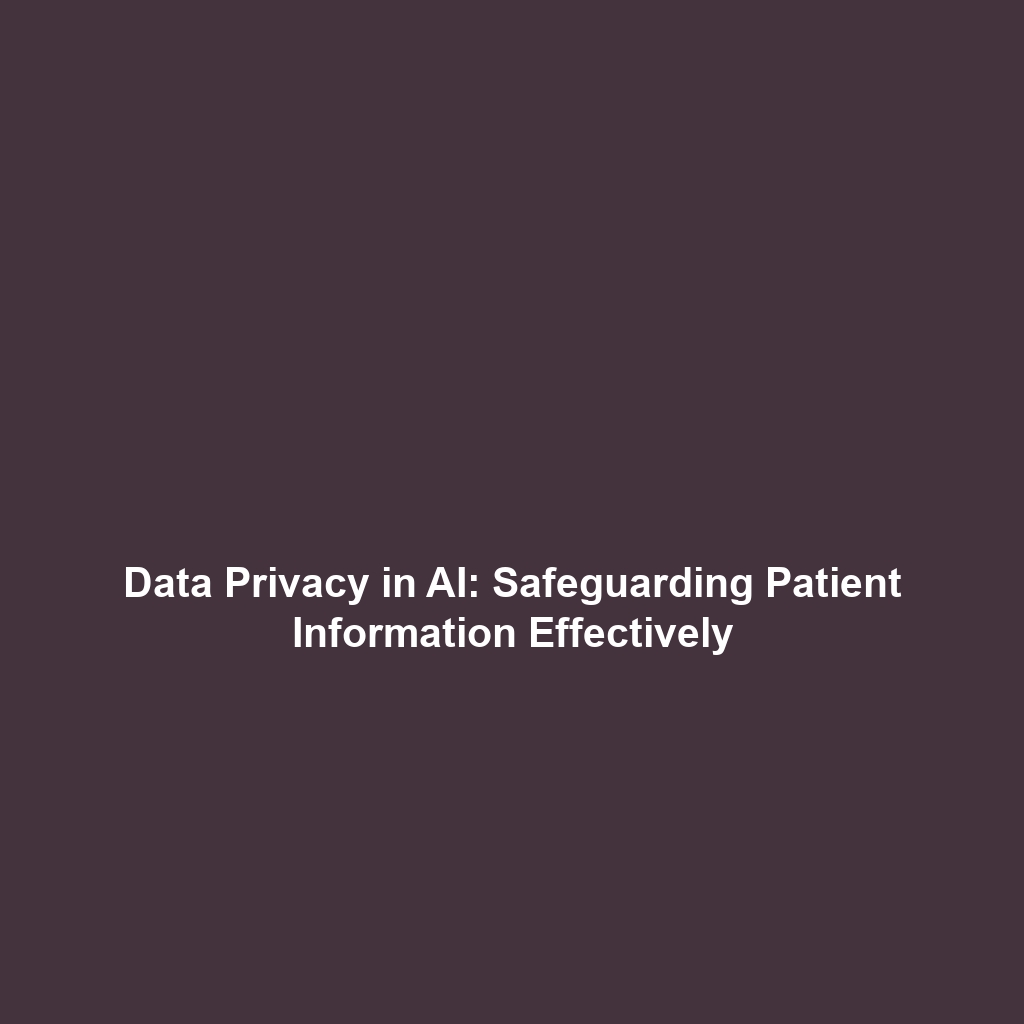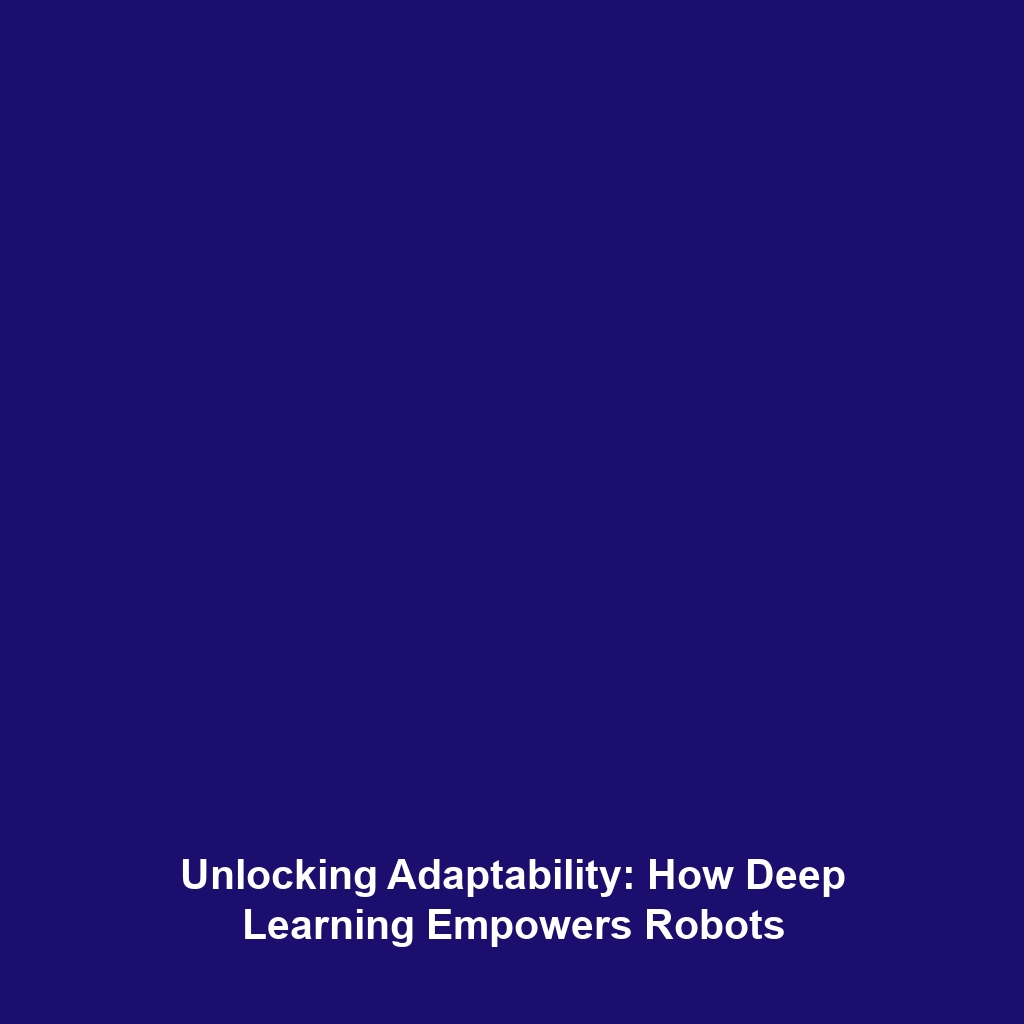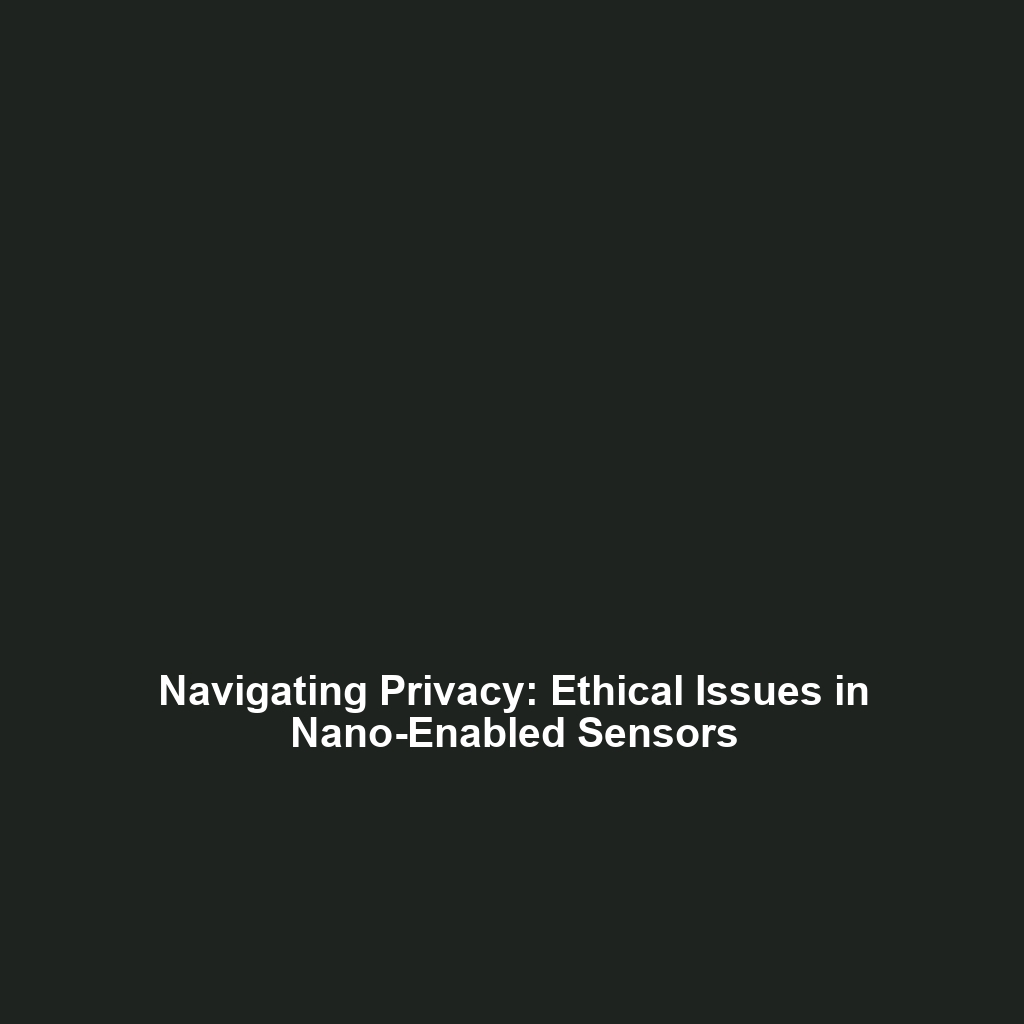Drones in Science: Studying Extreme Weather Events Linked to Climate Change
Drones used to study extreme weather events linked to climate change have emerged as a vital tool in understanding and analyzing the effects of climate change. By capturing high-resolution data and observations from hard-to-reach areas, these drones are transforming how scientists approach weather phenomena. This significant advancement within the broader context of Drones in Science showcases the essential role technology plays in environmental research and disaster management.
Key Concepts of Drones in Extreme Weather Studies
Drones are equipped with advanced sensors and imaging technologies that allow for detailed data collection. Major concepts related to the use of drones in studying extreme weather events include:
- Remote Sensing: Drones can gather information on atmospheric conditions, temperature variations, and humidity levels.
- High-Resolution Imaging: Aerial views from drones facilitate real-time monitoring of storm development and impact assessment.
- Data Collection: Drones assist in collecting data on precipitation patterns, wind speed, and other climatic factors crucial for understanding climate change effects.
Applications and Real-World Uses
The applications of drones used to study extreme weather events linked to climate change are diverse and impactful. Here are some practical uses:
- Hurricane Monitoring: Drones provide data on cyclone formation and intensity, enhancing forecasting accuracy.
- Flood Assessment: Post-disaster, drones are used for rapid damage assessment and relief operation coordination.
- Research Expeditions: Scientists deploy drones in remote regions to gather data previously inaccessible due to harsh conditions.
Current Challenges in Using Drones
Despite their advantages, there are challenges and limitations associated with drones used to study extreme weather events linked to climate change, including:
- Regulatory Hurdles: Different countries have varying regulations on drone usage, complicating cross-border research.
- Operational Limitations: Weather conditions can affect drone functionality and data accuracy.
- Battery Life: The limited flight time of drones can hinder extensive data collection during prolonged events.
Future Research and Innovations
Ongoing research and innovations are paving the way for revolutionizing how drones are used to study extreme weather events linked to climate change. Upcoming trends include:
- Autonomous Drones: Future drones are expected to feature enhanced AI capabilities for autonomous flight and decision-making.
- Improved Sensor Technology: Next-generation sensors will provide even more accurate and diverse environmental data.
- Integration with Climate Models: Enhanced data from drones will be increasingly integrated into predictive climate models, improving forecasting precision.
Conclusion
In summary, drones used to study extreme weather events linked to climate change are essential tools in the scientific community, offering invaluable insights into understanding climate dynamics. As challenges are addressed and technological innovations emerge, the relevance and effectiveness of drones in science will continue to grow. For those interested in further exploring the impact of drone technology on environmental research, check out our articles on drones in agriculture and drones for environmental monitoring.
